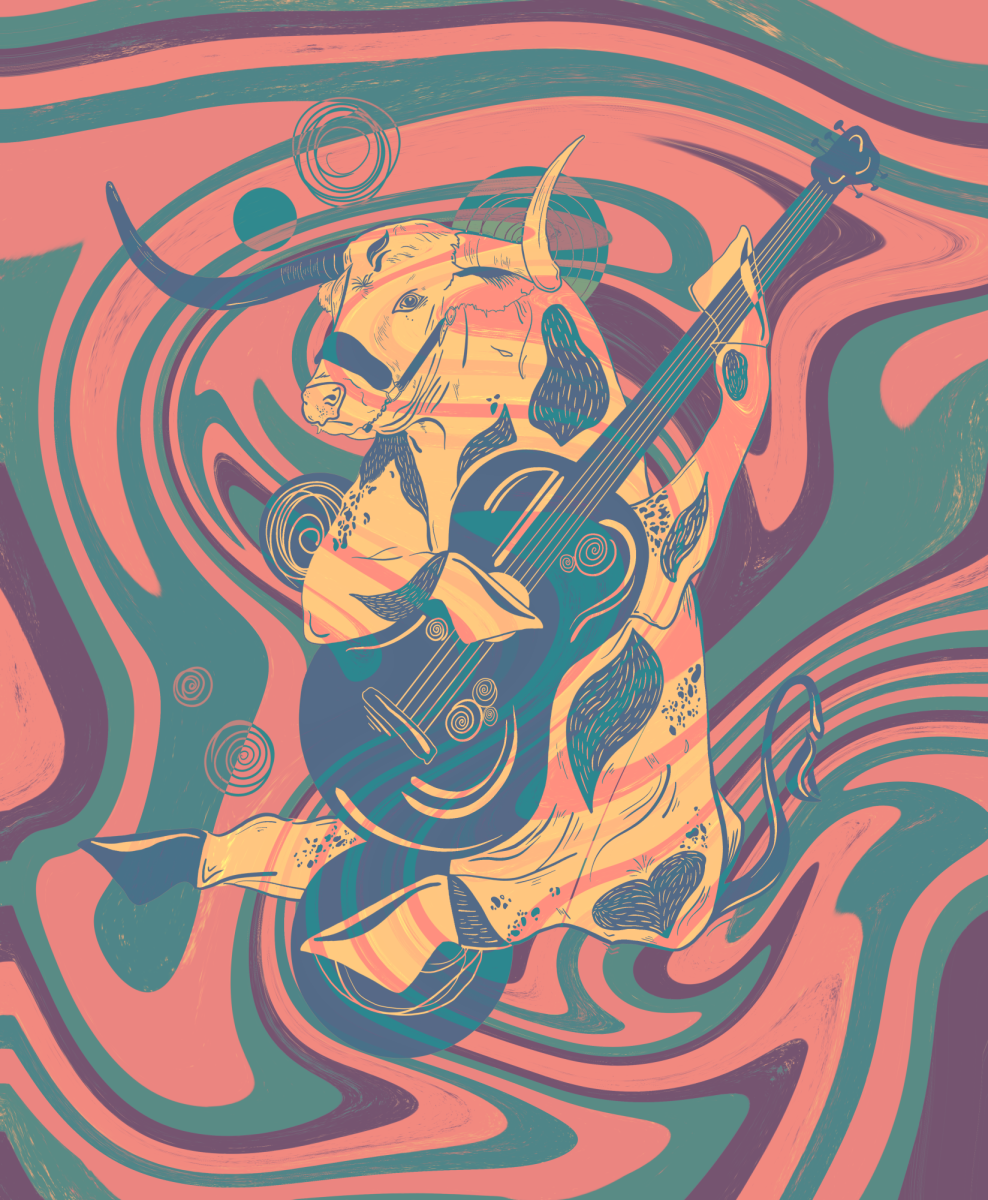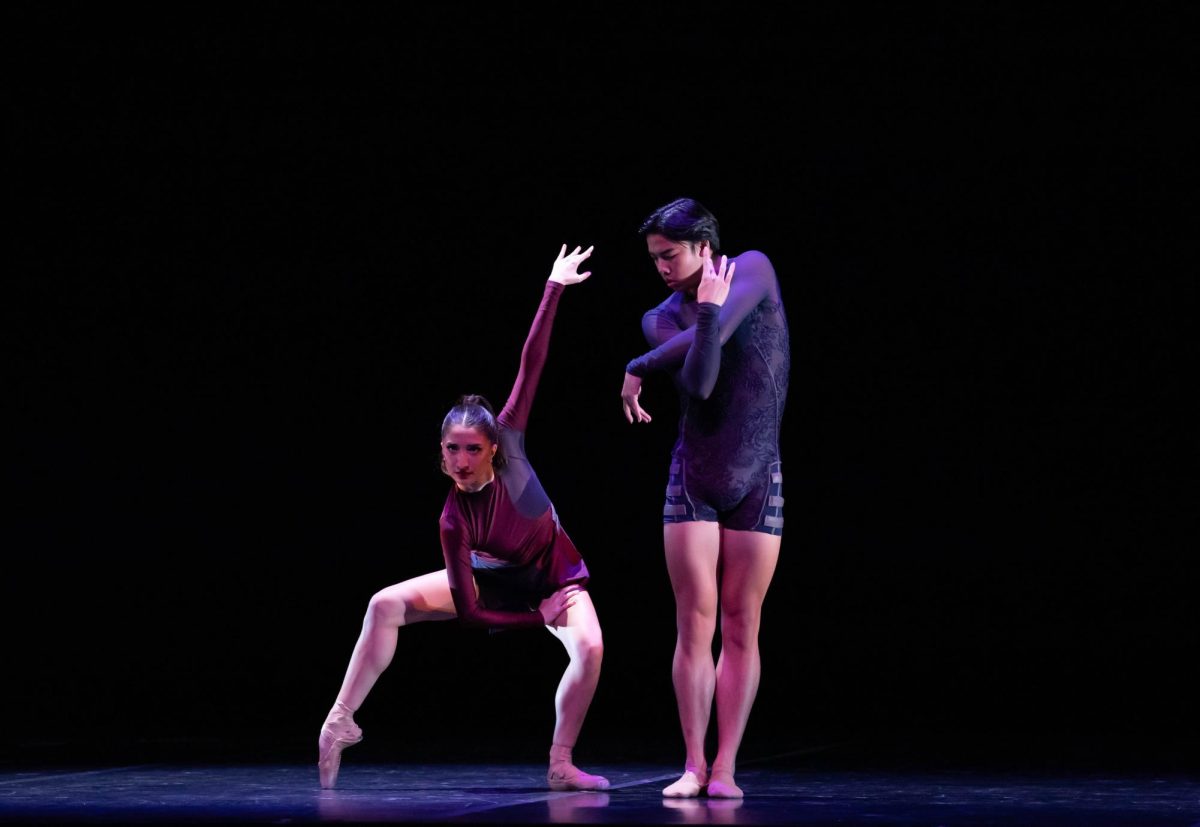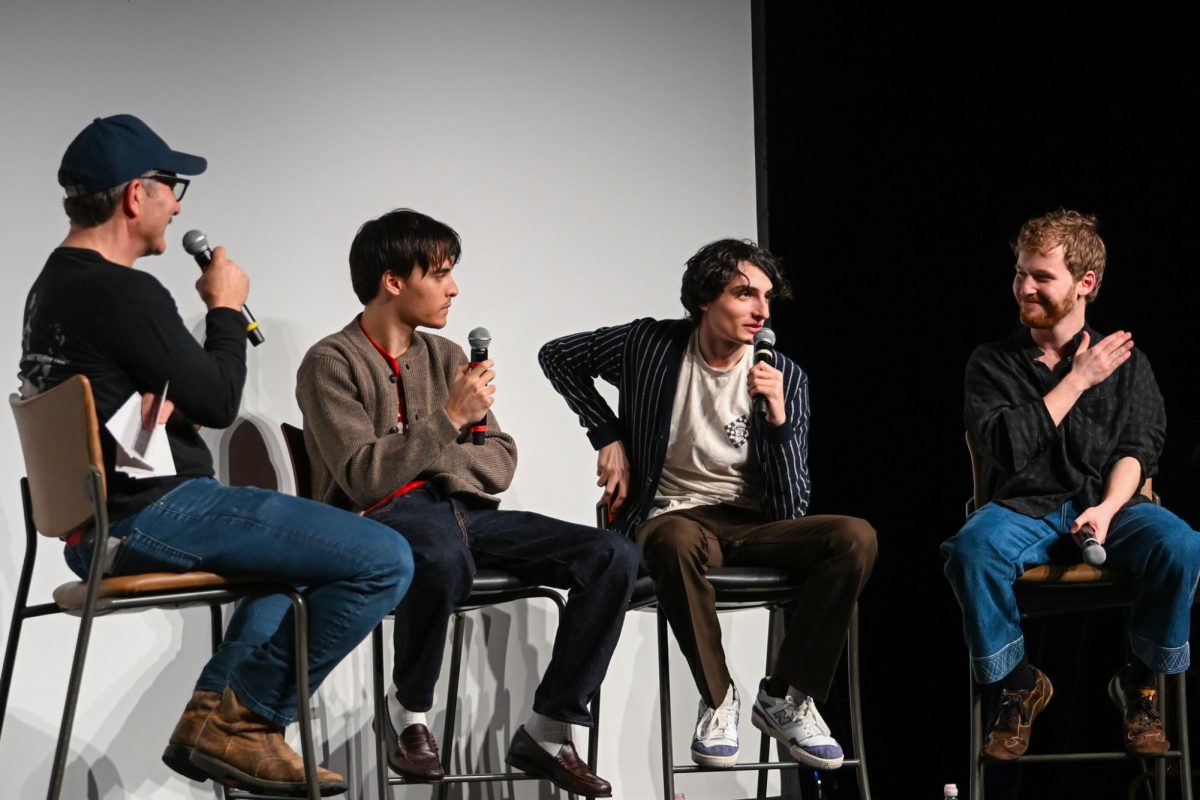Dressed in the same navy Dickey’s overalls, a quintet of performers use an array of power tools to create quality handmade objects out of wood and paint. The scent of sawdust lingers in the air over the mock construction site. Over the sound of buzzing tools, the performers offer simple blocks of wood described as artisan crafts to the audience — a critique on Austin’s art scene.
Earlier this month at the Museum of Human Achievement, an art gallery just east of I-35, five UT students participating in the Fleet Performance Collective put on their first performance of “Work in Progress.” Their show, a pop-up shop, aims to critique Austin’s art community and its role in gentrification.
“Work in Progress” is a part of the Cage Match Project, a program curated by art lecturer Ryan Hawk, who met the six Fleet performers while serving as their teaching assistant for an introduction to performance class last semester. Ever since, Fleet’s members have been meeting biweekly to collaborate and prepare for future shows.
“We worked really well together, so we wanted to continue doing that,” said Emily Lee, Fleet performer and studio art junior.
Lee said Fleet is attracted to the medium of performance art because it uses the human body as the vehicle to express complex and thought provoking ideas to its audience.
“It blurs the lines between the kind of the art object, and the artist,” Lee said. “It engages with the audience in a totally different way.”
Studio art junior Brooke Johnson, another Fleet performer, said the location where Cage Match takes place was also an essential element to the formation of the group’s art.
“It’s literally this antique cage that’s on wheels that was used to transport hay like a really long time ago,” Johnson said. “It’s really cool, really rusty, so it’s been repurposed as this kind of outdoors space for art to take place in.”
Because it’s in East Austin, Lee said the cage and museum stand out from most of their surroundings. Lee said the contradiction between the space’s purpose and the space’s location is the subject of their piece.
“Something about that location in Austin has so many connotations of defiantly gentrification, but also of just the city in general having this perpetually regenerative process,” Lee said. “Austin is always becoming a new thing every minute; there are things being built and torn down immediately.”
Lee said part of their goal with the performance was to address not only the labor of craftsmen but also the labor of those who build the spaces for creation. They wanted to address what form of labor is paid attention to and what form is not.
To accomplish this, two performers worked on a table by making freshly cut blocks of wood with the collective’s logo painted on it. They were giving the blocks to the audience for a suggested donation. Using the same base materials, the other performers worked on building walls inside the cage, not verbally communicating with the audience.
“A certain manipulation and presentation of those materials by (‘professional artists’) defines that materials’ worth to the public,” Lee said.
Although “Work in Progress” received a spectrum of reviews from the audience, some members believe that those who didn’t take it well didn’t see it satirically.
“That’s a fine line to ride when you’re being self-critical,” Lee said. “Yes we are critiquing the system of the arts in Austin, but we also profit off of that. Not that that alleviates us of any ethical responsibilities, but it acknowledges what needs to be acknowledged.”















